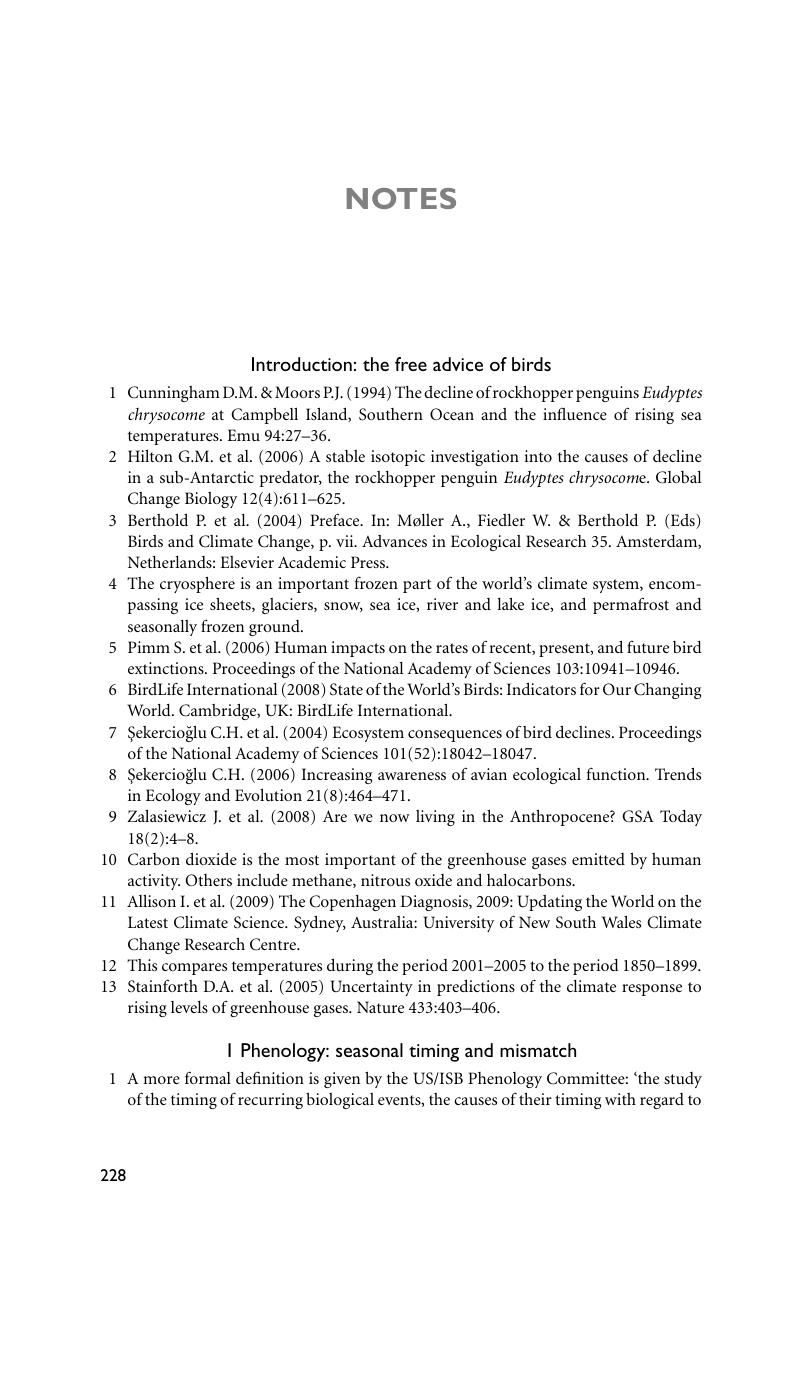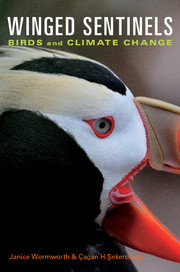Book contents
- Frontmatter
- CONTENTS
- ACKNOWLEDGEMENTS
- Introduction: The Free Advice of Birds
- Chapter 1 Phenology: Seasonal Timing and Mismatch
- Chapter 2 Migratory Birds Face Climate Turbulence
- Chapter 3 Range Shifts and Reshuffled Communities
- Chapter 4 Seabirds Herald Ocean Changes
- Chapter 5 Climate Change, Abundance and Extinction
- Chapter 6 Tropical Warming and Habitat Islands
- Chapter 7 Shifting Ground on Conservation
- NOTES
- INDEX
- PLATE SECTION
- PLATE SECTION
- PLATE SECTION
- References
NOTES
Published online by Cambridge University Press: 05 March 2012
- Frontmatter
- CONTENTS
- ACKNOWLEDGEMENTS
- Introduction: The Free Advice of Birds
- Chapter 1 Phenology: Seasonal Timing and Mismatch
- Chapter 2 Migratory Birds Face Climate Turbulence
- Chapter 3 Range Shifts and Reshuffled Communities
- Chapter 4 Seabirds Herald Ocean Changes
- Chapter 5 Climate Change, Abundance and Extinction
- Chapter 6 Tropical Warming and Habitat Islands
- Chapter 7 Shifting Ground on Conservation
- NOTES
- INDEX
- PLATE SECTION
- PLATE SECTION
- PLATE SECTION
- References
Summary

- Type
- Chapter
- Information
- Winged SentinelsBirds and Climate Change, pp. 228 - 247Publisher: Cambridge University PressPrint publication year: 2011



